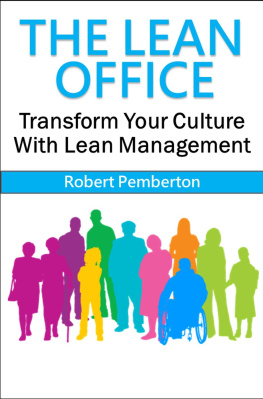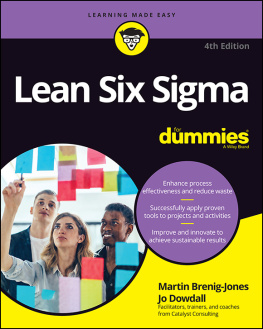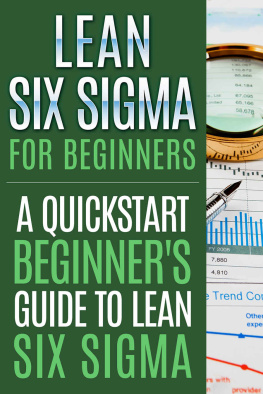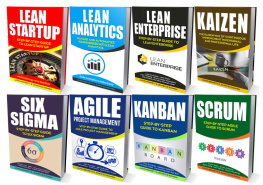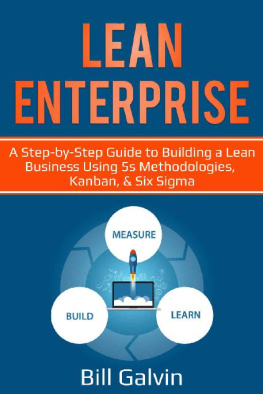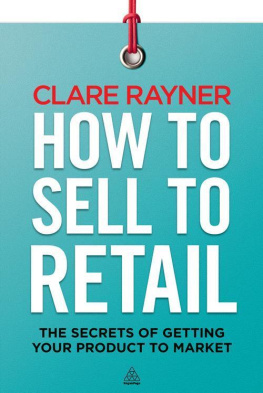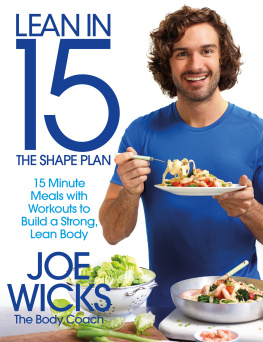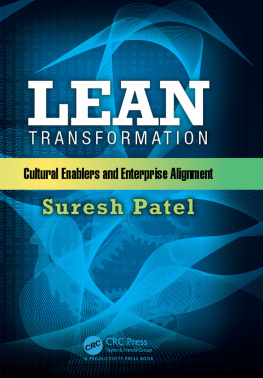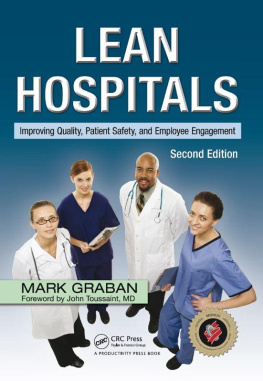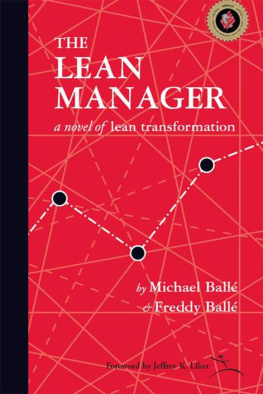The Lean Handbook
A Guide to the Bronze Certification Body of Knowledge
Anthony Manos and Chad Vincent, editors
ASQ Quality Press
Milwaukee, Wisconsin
American Society for Quality, Quality Press, Milwaukee 53203
2012 by ASQ
All rights reserved. Published 2012
Library of Congress Cataloging-in-Publication Data
The lean handbook / Anthony Manos and Chad Vincent, editors.
p. cm.
Includes bibliographical references and index.
ISBN 978-0-87389-804-1 (alk. paper)
1. Total quality management. 2. Industrial efficiency. I. Manos, Anthony,
1963 II. Vincent, Chad.
HD62.15.L4324 2012
658.4013dc23
2012010040
No part of this book may be reproduced in any form or by any means, electronic, mechanical, photocopying, recording, or otherwise, without the prior written permission of the publisher.
Publisher: William A. Tony
Acquisitions Editor: Matt Meinholz
Project Editor: Paul Daniel OMara
Production Administrator: Randall Benson
ASQ Mission: The American Society for Quality advances individual, organizational, and community excellence worldwide through learning, quality improvement, and knowledge exchange.
Attention Bookstores, Wholesalers, Schools, and Corporations: ASQ Quality Press books, video, audio, and software are available at quantity discounts with bulk purchases for business, educational, or instructional use. For information, please contact ASQ Quality Press at 800-248-1946, or write to ASQ Quality Press, P.O. Box 3005, Milwaukee, WI 53201-3005.
To place orders or to request a free copy of the ASQ Quality Press Publications Catalog, visit our website at http://www.asq.org/quality-press.

To Jennifer, who puts up with all my antics. To Judy, who taught me her version of continuous improvementDo not rest on your laurels. And to George, for supporting me and for helping me reach a higher level of accomplishment.
Tony Manos
To my wife, Holly, and my kids, Austin and Miranda, who gave up their time with a husband and father to make this book possible, and whose continued support provides me strength to pursue my dreams.
Chad Vincent
Foreword
Robert D. Miller
Executive Director
The Shingo Prize for Operational Excellence
Jon M. Huntsman School of Business
Utah State University
T he Lean Handbook is a terrific compilation of sections written by practitioners who bring their individual and unique experience and expertise to this body of knowledge. I appreciate the connections made with many of the dimensions and principles identified in the Shingo model. We must each be on a journey of continuous improvement, which means we must be constantly looking for new perspectives and approaches to bring about personal and organizational improvement.
Anthony Manos is correct when he says that the most difficult and yet important work we will do with lean is to change the culture of the organization. For lean to be successful, the many tools outlined in this handbook must be supplemented with an equally devoted effort to influence the mind-sets and behaviors of people in the organization. At the Shingo Prize we have learned that the best way to do this is to, as Stephen Covey would say, begin with the end in mind. In other words, while you are learning to use these great tools, you must also keep the deeper meaning, or the why behind the tools, very clear. The Lean Handbook can help each of us act our way into a new way of thinking, and then think our way into a new way of acting. By putting the wisdom of this handbook to work every day by every person and never taking your eyes off the prizea new culture that is deeply embedded in the principles of leanwe will greatly increase the odds of a sustainable business transformation.
As you put this work into practice, you will recognize the shifting roles of leaders and managers in your organization. It is not enough for leaders to just keep doing what they have always done, nor is it enough for them to merely support the work of others. Rather, leaders must lead the cultural transformation and build the principles behind all of these great tools into the mind-sets of their associates. Similarly, managers have to do more than participate in kaizen teams. The emerging role of managers is to focus on designing, aligning, and improving the systems of the business so that they drive ideal behaviors that cause people to change their thinking of what excellence really looks like.
Using The Lean Handbook as a roadmap will no doubt be a powerful tool in helping you avoid many of the mistakes made by others over the years. I invite you to visit http://www.shingoprize.org to see how the key points illustrated here support the Shingo model for operational excellence. My thanks to all of the contributing authors!
Preface
Welcome to The Lean Handbook
What a remarkable journey this has been. Working on this book has been a terrific experience. We have had the great pleasure of working with a number of wonderful and giving individuals. Lean practitioners are truly an amazing and unique family. The energy and willingness of the individuals who helped create this book are evidence of the great profession and network of people of which we take part. So many different points of view and applications of knowledge made for great discussions, contemplation, and collaboration. With so much knowledge and understanding, it was difficult to find a point at which to stop talking and start putting these discussions on paper. In the end, we believe this book embodies the Lean Body of Knowledge (BOK) in a way that is much like the lean journeyever evolving and always adaptable.
Lean has been a culmination of multiple individuals, philosophies, systems, tools, and applications throughout history. The challenge has been that all these different contributions are found in different places, called different things, and applied in different mannersmaking it difficult for the lean practitioner to gain an understanding of lean at a level of its full body of knowledge without great effort, research, experience, and networking. While this book is not a substitute for the effort, research, experience, and networking every seasoned lean practitioner goes through, we hope it provides a sound starting point for those just beginning or expanding their knowledge of lean.
Not an Exam Preparation Manual
First and foremost, this book is not a Lean Certification exam preparation manual. The Lean Bronze Certification exam questions are based on material from the five recommended reading books (see Appendix B, Recommended Reading List for Lean Certification Exam Preparation):
- Learning to See
- Lean Thinking
- Gemba Kaizen
- Lean Production Simplified
- Lean Hospitals
Make no mistakethis book takes nothing away from the great lean works that have preceded it. As a matter of fact, we believe that this book complements and pays tribute to those works as being pieces of the larger Lean BOK. But that is exactly what they arepieces. Our intent was to put these pieces together in a manner to provide a higher-level overview of the Lean BOK. We realized early on in the project that this task was not something we could do alone.
This handbooks intention is to gather information related to the Lean BOK (see Appendix A, Lean Certification Body of Knowledge) into one source. This book will enhance your understanding of the BOK as a whole and give you a more holistic look at lean. As great as the five recommended reading books are, they were not written with the intent of covering all aspects of the Lean BOK individually. Additionally, this book does not rehash the content of the five recommended reading books. What we have done is put together a book whose sole purpose is to embody the entire Lean BOK, section by section. This book is, by design, written at the Bronze Level for certification knowledge. This means that the weightings used in the Lean BOK for the Bronze Certification were considered for the depth and breadth of material considered for each rubric. Therefore, it is by no means all inclusive of every principle, system, and tool at every level of application related to lean.
Next page

